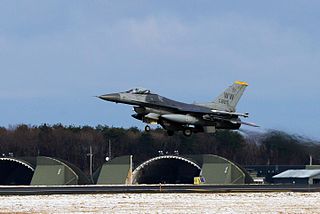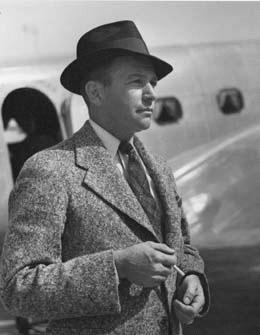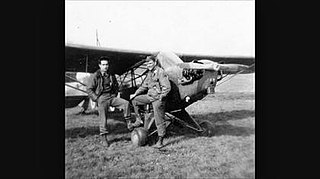
AviaBellanca Aircraft Corporation was an American aircraft design and manufacturing company. Prior to 1983, it was known as the Bellanca Aircraft Company. The company was founded in 1927 by Giuseppe Mario Bellanca, although it was preceded by previous businesses and partnerships in which aircraft with the Bellanca name were produced, including Wright-Bellanca, in which he was in partnership with Wright Aeronautical.

East Wenatchee is a city in Douglas County, Washington, United States. The population at the 2010 census was 13,190, a 129.1% increase on the 2000 census, having annexed much of the East Wenatchee Bench CDP. As of 2019, the Office of Financial Management estimates that the current population was 14,219.

Misawa Air Base is an air base of the Japan Air Self-Defense Force (JASDF), the United States Air Force, and the United States Navy located in Misawa, Aomori, in the northern part of the island of Honshū of Japan. It is located 3 NM northeast of Misawa railway station, 4.8 km (3.0 mi) west of the Pacific Ocean, 16 km (9.9 mi) northeast of Towada, 29 km (18 mi) northwest of Hachinohe, and 684 km (425 mi) north of Tokyo at the "Tip of the Spear". It is a Pacific Air Forces (PACAF) facility with the 35th Fighter Wing as its host wing. It hosts both Japanese and American troops.

Misawa is a city located in Aomori Prefecture, Japan. As of 31 January 2023, the city had an estimated population of 38,198 in 19493 households, and a population density of 330 persons per km². The total area of the city is 119.87 square kilometers (46.28 sq mi).
This is a list of aviation-related events from 1931:

Clyde Edward Pangborn, nicknamed "Upside-Down Pangborn", was an American aviator and barnstormer who performed aerial stunts in the 1920s for the Gates Flying Circus. He was its half-owner, chief pilot and operating manager, working in partnership with Ivan R. Gates. In 1931, Pangborn and co-pilot Hugh Herndon Jr. flew their plane, Miss Veedol, on the first non-stop flight across the Pacific Ocean.

San Luis Obispo County Regional Airport, McChesney Field is a civil airport near San Luis Obispo, California, United States. Three passenger airlines serve the airport with nonstop flights to eight cities: Dallas-Fort Worth, Denver, Los Angeles, Phoenix, Portland, San Diego, San Francisco and Seattle. The airport was established in 1939 and used by the U.S. military between 1939 and 1945.

Pangborn Memorial Airport is in Douglas County, Washington, four miles east of Wenatchee, a city in Chelan County. The airport is owned by the Ports of Chelan and Douglas Counties.

Giuseppe Mario Bellanca was an Italian-American aviation pioneer, airplane designer and builder, who is credited with many design firsts and whose aircraft broke many aviation records. He was inducted into the National Aviation Hall of Fame in 1973. The Bellanca C.F., the world's first enclosed-cabin monoplane, is on display at the National Air and Space Museum. Bellanca was known mostly for his long range aircraft which led the way for the advancement of international and commercial air transportation.

The Bellanca CH-300 Pacemaker was a six-seat utility aircraft, built primarily in the United States in the 1920s and 1930s. It was a development of the Bellanca CH-200, fitted with a more powerful engine and, like the CH-200, soon became renowned for its long-distance endurance.

The Wenatchee Valley Museum & Cultural Center (WVMCC) is a museum in Wenatchee, Washington, that houses local and regional history, Native American heritage, and the propeller used in the first trans-Pacific flight.

The Pangborn-Herndon Memorial Site is a monument in (present-day) East Wenatchee, Washington, dedicated to Clyde Pangborn and Hugh Herndon, Jr., the two men who made the first non-stop flight across the Pacific Ocean. They departed from Misawa, Japan, on October 4, 1931, and they landed near this site 41 hours later. The memorial is northeast of East Wenatchee and it consists of a 14-foot-high (4.3 m), 14-ton (13 t) basalt column atop a concrete base. The column is topped by 36-inch (91 cm) wings made of aluminum.
This was in an unincorporated area in 1931, but the town of Wenatchee, Washington, was nearby. It was Mr. Pangborn's home town.

The sole Wright-Bellanca WB-2, named Columbia, Miss Columbia, and later Maple Leaf, was the second in a series of aircraft designed by Giuseppe Mario Bellanca, initially for Wright Aeronautical then later Columbia Aircraft Corp.

The history of aviation in Delaware begins with the first aeronautical event of the flight of Robie Seidelinger in an aircraft of his own design, the Delaplane, on 21 October 1910 at Wawaset Park, Wilmington.

The Vance Viking, also called the Vance Flying Wing Express, and the Texas Sky Ranger, was a single seat cargo and racing aircraft.

First lieutenant Duane Francies was a military aviator who earned the Distinguished Flying Cross for his service.
John Polando (1901–1985) was an early American aviation pioneer who, along with Russell Boardman, flew from Floyd Bennett Field to Istanbul in 1931 to set an aviation record for the longest continuous distance flown without refueling. Following this achievement, he was an officer in World War II.
Russell Boardman was an early American aviation pioneer who, along with John Polando, flew from Floyd Bennett Field to Istanbul, Turkey in 1931 to set an aviation record for the longest continuous distance flown without refueling. Before this achievement, he was also a stunt pilot for the film Hell's Angels.

Misawa Aviation & Science Museum, Aomori is an aerospace museum in the city of Misawa, Aomori Prefecture, Japan. The museum was opened on August 8, 2003, and is located adjacent to Misawa Airport.

A transpacific flight is the flight of an aircraft across the Pacific Ocean from Australasia, East and Southeast Asia to North America, Latin America, or vice versa. Such flights have been made by fixed-wing aircraft, balloons and other types of aircraft.

















